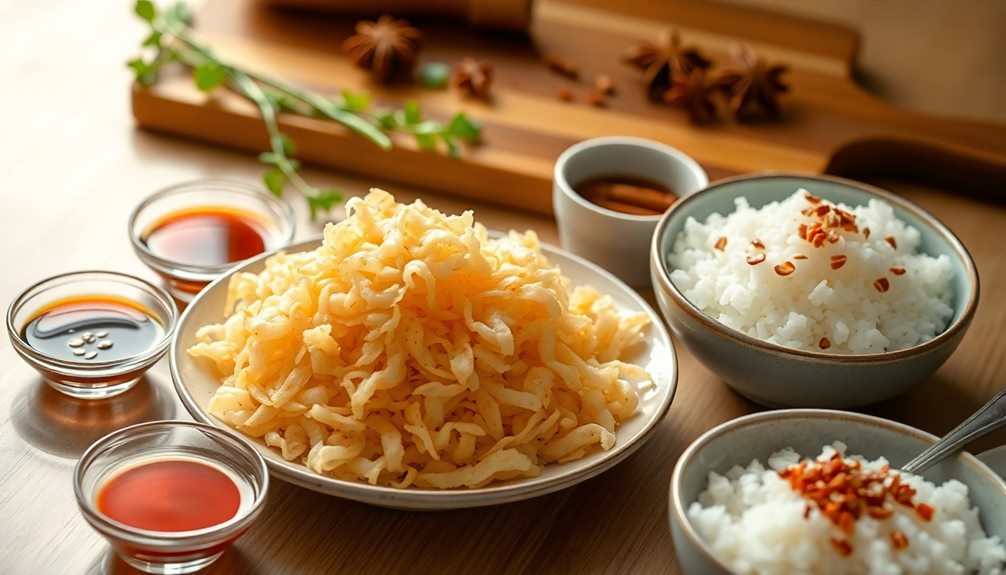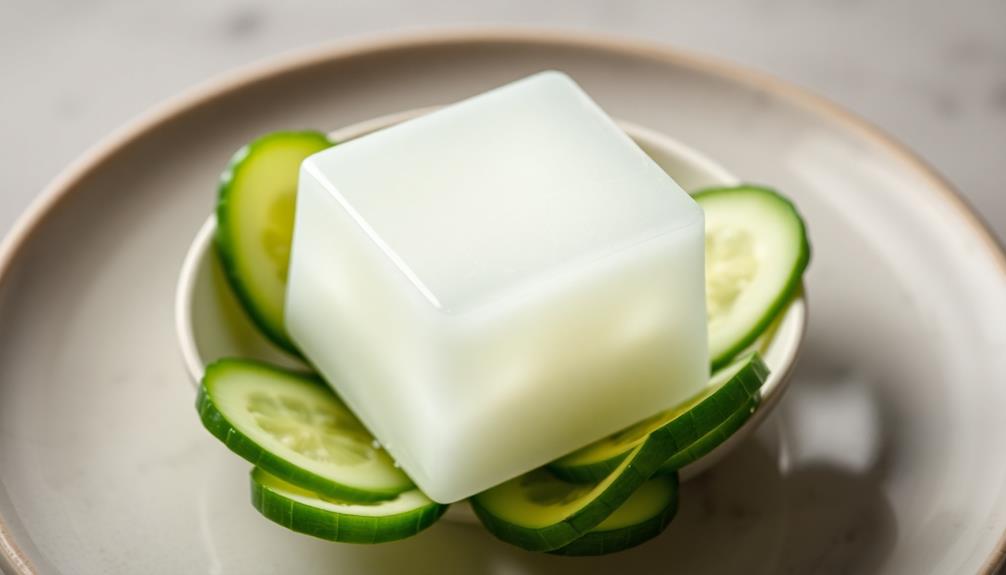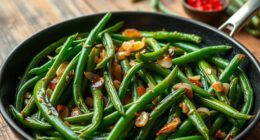Ramen's origins trace back to Chinese noodle dishes, but Japan and Korea have each put their unique spin on this savory staple. Japanese ramen boasts regional styles like tonkotsu and shoyu, while Korean ramyeon features a spicy broth. Both cuisines celebrate ramen through tasty festivals and cultural events. Ramen's versatile flavors and toppings allow for endless customization, from tender pork to crunchy veggies. Whether you prefer the delicate umami of Japan or the bold spice of Korea, ramen brings people together for a comforting culinary experience. And there's so much more to discover about this beloved dish!
Key Takeaways
- While ramen has Chinese origins, both Japanese and Korean cultures have developed distinct regional ramen styles over time, each with unique flavors and ingredients.
- Japanese ramen is known for its delicate umami flavors and lighter broths, often incorporating ingredients like miso, soy sauce, and seafood.
- Korean ramyeon, on the other hand, features bold, spicy flavors with gochujang and kimchi, characterized by rich, hearty broths that may include meat and vegetables.
- Both Japanese and Korean ramen reflect cultural adaptations and local ingredients, with regional variations existing within each cuisine.
- The culinary exchange between Japan and Korea has led to a global surge in ramen popularity, resulting in fusion dishes and innovative interpretations of the classic dish.
History
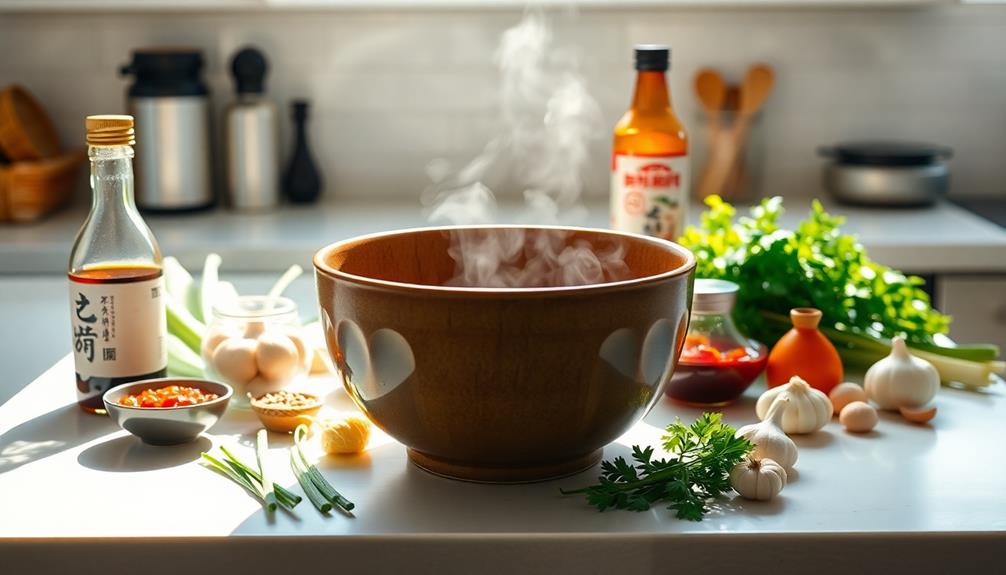
Ramen, the beloved noodle dish, has a rich and intertwined history between Japan and Korea. You might be surprised to learn that the origins of ramen can be traced back to Chinese noodle dishes, which were then adapted and refined in both Japanese and Korean cuisine.
In Japan, ramen has evolved over centuries, with various regional styles emerging, each with its own unique broth, noodle texture, and toppings. From the rich, creamy tonkotsu broth of Fukuoka to the light, soy-based shoyu ramen of Tokyo, the diversity of Japanese ramen is truly remarkable.
Meanwhile, Korean-style ramen, known as ramyeon, has also gained popularity worldwide. Influenced by both Chinese and Japanese traditions, Korean ramen often features a spicy, savory broth and chewy noodles, making it a comforting and flavorful dish.
Whether you prefer the delicate nuances of Japanese ramen or the bold, spicy tones of Korean ramyeon, the history of these noodle dishes is a testament to the rich culinary exchange between these two nations.
Recipe

Ramen, a beloved noodle dish, has long been a staple in Japanese cuisine. However, in recent years, Korean-style ramen has also gained immense popularity, capturing the hearts and taste buds of food enthusiasts worldwide. The main difference between ramen and ramyeon lies in the preparation and flavor profiles. While Japanese ramen often features fresh noodles and a rich, handcrafted broth, Korean ramyeon typically uses instant noodles with a spicy, bold seasoning. Both variations offer unique experiences, appealing to different palates and preferences.
Whether you prefer the bold flavors of Korean ramen or the delicate nuances of the Japanese version, mastering the art of ramen-making can be a truly rewarding culinary experience. To enhance your culinary repertoire, consider exploring the diverse and flavorful Brazilian dishes that showcase regional ingredients and cultural heritage.
In this recipe, we'll guide you through the process of creating a delectable bowl of ramen that celebrates the unique characteristics of both Japanese and Korean styles. Get ready to immerse yourself in the rich, umami-packed broth and savor the perfectly cooked noodles that will transport your taste buds on a flavorful journey.
Ingredients:
- 8 oz. ramen noodles
- 4 cups chicken or vegetable broth
- 2 tablespoons soy sauce
- 1 tablespoon mirin
- 1 teaspoon sesame oil
- 1 clove garlic, minced
- 1 inch fresh ginger, grated
- 1 soft-boiled egg
- 2 green onions, sliced
- 1/2 cup shredded cooked chicken or pork (optional)
- 1/4 cup kimchi (optional)
Instructions:
In a large pot, bring the broth, soy sauce, mirin, and sesame oil to a simmer over medium heat. Add the garlic and ginger, and let the flavors meld for 5 minutes.
Add the ramen noodles and cook according to the package instructions, typically around 3-4 minutes. Gently lower the soft-boiled egg into the broth and let it warm through.
Ladle the ramen into bowls and top with the green onions, shredded protein (if using), and a spoonful of kimchi (if using).
When it comes to ramen, the toppings and customizations are endless. Feel free to experiment with different proteins, vegetables, or even a soft-boiled egg for that perfect creamy texture.
Cooking Steps
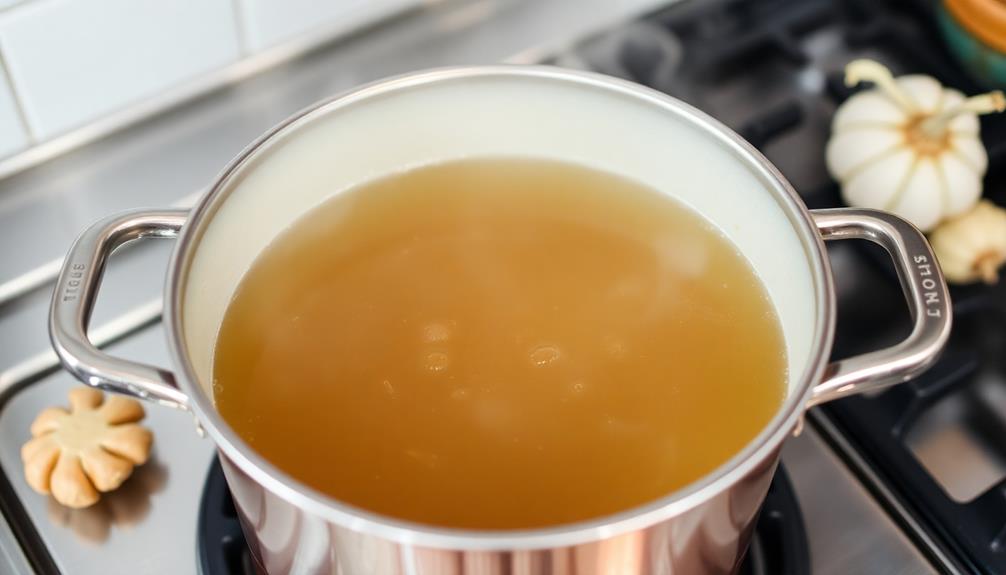
Soak the noodles in hot water, then drain them thoroughly.
Next, add the savory broth to the noodles and top it off with your favorite ingredients.
Get ready to enjoy a perfectly prepared bowl of ramen – it's time to dig in!
Step 1. Soak Noodles in Hot Water

With water simmering on the stovetop, it's time to submerge the noodles, allowing them to absorb the heat and transform into a tender, pliable texture.
First, grab the dried noodles and give them a gentle shake to loosen them up. Then, carefully lower the noodles into the hot water, making sure they're fully submerged. Let them soak for 3-5 minutes, occasionally stirring to ensure even cooking. You'll know they're ready when they've softened and become silky smooth.
Drain the noodles, but don't rinse them – you want to keep that delicious broth flavor!
Now that your noodles are perfectly prepped, it's time to assemble the rest of your ramen masterpiece. Get ready to add your favorite toppings and dive into a steaming, slurp-worthy bowl of ramen perfection.
Whether you prefer the bold, umami flavors of Japanese ramen or the spicy kick of Korean-style, the noodle-soaking step is crucial for achieving that signature texture and taste.
Step 2. Drain Noodles Thoroughly
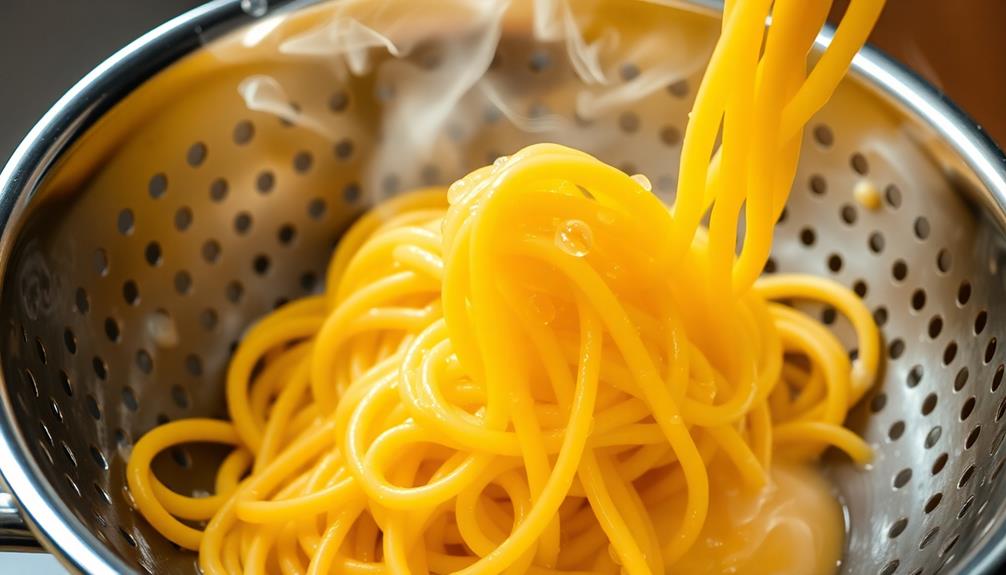
After letting the noodles soak in the hot water, it's time to drain them thoroughly.
Grab your trusty colander and get ready to give those noodles a good draining! Carefully pour the hot water and noodles into the colander, making sure to hold it firmly over the sink.
Give the colander a gentle shake to help the water drain off. You don't want any soggy noodles, so be thorough in this step.
Once the noodles are nicely drained, you can transfer them to your serving bowl. This is an important part of the process – you want to ensure your ramen noodles have the perfect texture, not too wet or too dry.
With the noodles drained, you're one step closer to enjoying a delicious bowl of ramen, whether it's Japanese or Korean style.
Get ready for some slurpin' good fun!
Step 3. Add Broth to Noodles
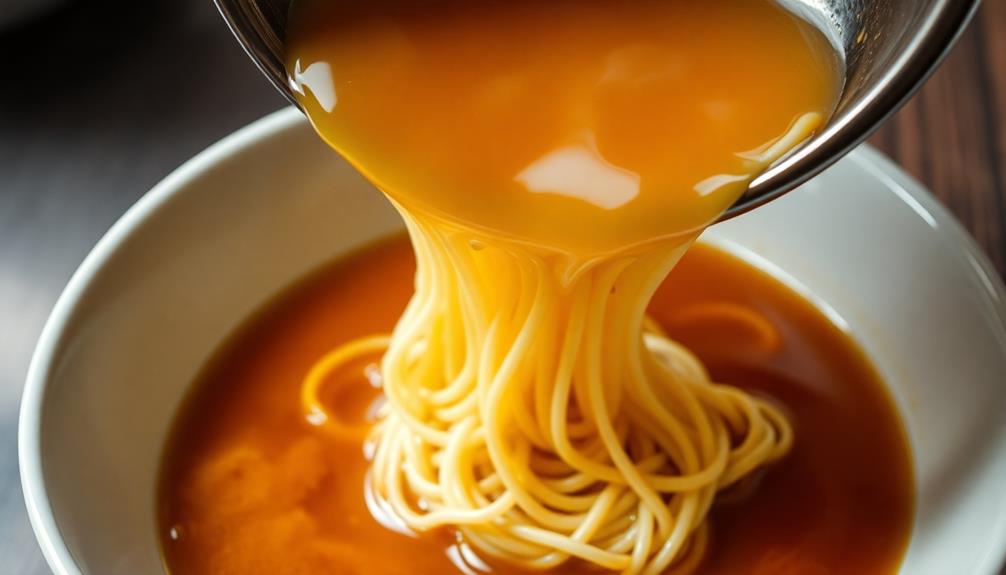
Next, carefully pour the hot broth over the noodles in the serving bowl. The rich, savory liquid will immediately fill the air with an irresistible aroma. Breathe it in deeply – isn't that just heavenly?
Now, use your chopsticks to gently stir the noodles, ensuring they're fully submerged and evenly coated. The goal is to create the perfect balance of tender noodles and flavorful broth in each bite.
Take a moment to admire your handiwork. Doesn't it look absolutely mouthwatering? The vibrant colors and inviting steam make this dish an absolute delight.
Now, it's time to dig in! Carefully lift a bundle of noodles to your mouth, slurping them up with gusto. The combination of chewy noodles and umami-packed broth is sure to tantalize your taste buds.
Savor each slurp, letting the flavors dance on your tongue. Ramen perfection has been achieved!
Step 4. Add Desired Toppings

Now that you've got the perfectly cooked noodles and rich broth, it's time to start building your personalized ramen masterpiece. The fun part is adding your favorite toppings to create a dish that's uniquely you!
First, consider the classics – juicy slices of pork, soft-boiled eggs with runny yolks, and fresh green onions to add a pop of color and flavor.
For a heartier meal, you can't go wrong with tender braised beef or crispy chicken.
Don't be afraid to get creative, too! Crunchy veggies like carrots, bean sprouts, and cabbage add a satisfying texture.
Toasted nori sheets, sweet corn, and a drizzle of chili oil can also elevate your ramen to new heights.
The best part? You get to be the chef. Customize your bowl with all the toppings that make your taste buds dance.
Ramen is a canvas, so let your imagination run wild!
Step 5. Enjoy Your Perfectly Prepared Ramen
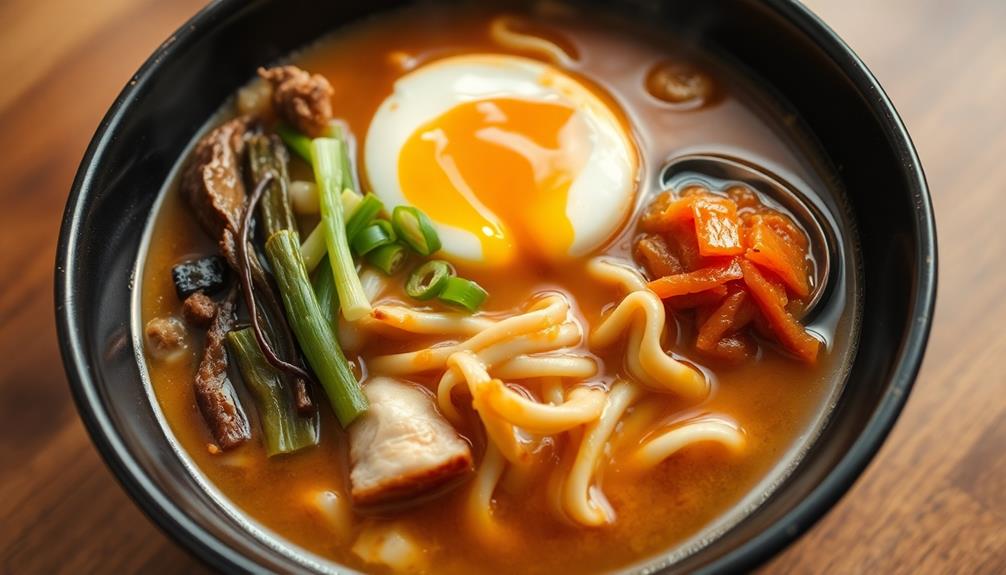
With the noodles cooked to perfection and the broth simmering with rich flavors, it's time to assemble your ramen masterpiece.
Start by carefully transferring the noodles into a deep bowl. Ladle the aromatic broth over the top, making sure to capture all the delicious goodness.
Now, get creative with your toppings! Slice up perfectly soft-boiled eggs and let them gently float on the surface. Sprinkle on some freshly chopped scallions for a pop of color and crunch. If you're feeling adventurous, add a drizzle of chili oil or a sprinkle of spicy sesame seeds.
Don't forget the final touch – a sprinkle of toasted sesame seeds to tie all the flavors together.
With a deep breath, savor the aroma and dive in. Slurp up those noodles, sip the broth, and enjoy every mouthwatering bite of your homemade ramen. Bon appétit!
Final Thoughts
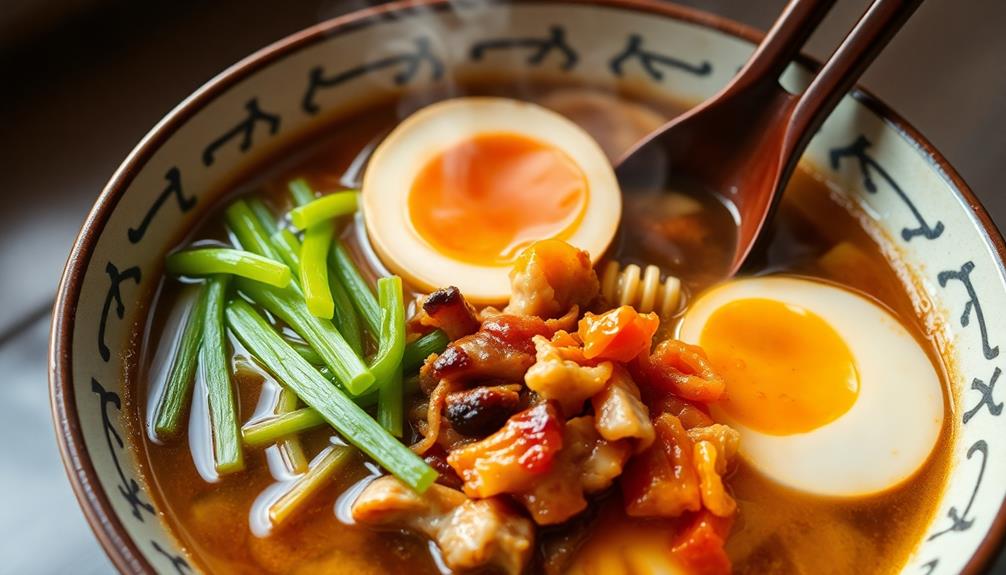
Undoubtedly, the ramen rivalry between Japanese and Korean variants has captivated food enthusiasts worldwide.
Whether you're Team Japan or Team Korea, one thing's for sure – this delightful dish has the power to bring people together.
Slurping up those irresistible noodles, bathed in rich, savory broths, is an experience that transcends cultural boundaries.
From the delicate, umami-packed Japanese version to the bold, spicy Korean take, there's a ramen to suit every palate.
Frequently Asked Questions
How Do Ramen and Ramyeon Differ in Taste and Texture?
Ramen has a richer, more complex broth that's often soy-based, while ramyeon has a spicier, bolder flavor from its gochujang-infused broth. Ramen's noodles are typically chewier, whereas ramyeon's are thinner and more delicate.
What Is the Significance of Ramen and Ramyeon in Their Respective Cultures?
Ramen and ramyeon hold cultural significance in their respective cuisines, reflecting the culinary traditions and flavors unique to Japan and Korea. They're more than just noodle dishes – they're expressions of national identity and pride.
Are There Any Health Concerns Associated With Consuming Ramen or Ramyeon?
You should be aware that excessive consumption of ramen or ramyeon may lead to health issues like high sodium intake, weight gain, and potential cardiovascular problems. Moderation is key when enjoying these savory noodle dishes.
How Do the Serving Sizes and Portions of Ramen and Ramyeon Compare?
The serving sizes and portions of ramen and ramyeon can vary, but you'll generally find larger portions with ramyeon. The noodles and broth in ramyeon tend to be more abundant compared to typical ramen servings.
What Are the Common Misconceptions About the Origins of Ramen and Ramyeon?
You may think ramen and ramyeon have the same origins, but there are common misconceptions about their distinct cultural roots. Their serving sizes and portions vary, reflecting the unique culinary traditions they stem from.



